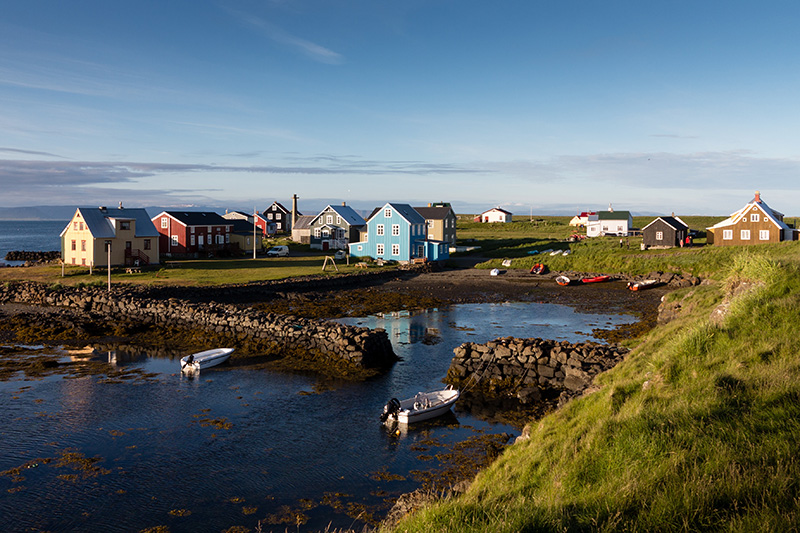16 September: I left Westfjords last evening, taking the ferry across Breiòafjoròur, a large bay separating the Westfjords from the Snaefellsnes Peninsula and am a hundred miles or so north of Reykjavik in a community called Reykholt; in two days I leave for Oslo. (About that bay—it is unusual in having an enormous number of “islands, islets, and skerries.” One of those islands, Flatey, is inhabited year-round. I have to wonder what motivates people to have settled there and to remain. It’s an hour by ferry from one side of the bay, an hour and a half from the other and tiny; it won’t stand a chance with sea level rise and it’s only a short walk from one side to the other. I understand and am drawn to isolated living, small villages, islands, and so forth, but this seems extreme. I need to see if I can discover what brought and keeps them there.) In my mind, leaving Iceland divides the trip in half, not just temporally with five weeks in each area, but psychically. I have been on islands—Greenland, Iceland, Faroes—and now go to the northern reaches of the European continent. The four remaining countries have a coherent feel about them that is lacking with the islands. I have no idea how far to take this notion or what if anything to make of it, but it feels different. There’s no question that I didn’t connect with Greenland as I have with these two neighbors to its east. It has to make a big difference that I was restricted to flying and sailing to get around Greenland whereas I’ve taken a car and moved more freely and widely in the other two locales. In Greenland people essentially cling to the perimeter of the land/ice mass and without the time and effort of getting on a ferry they are restricted to their local areas by the lack of roads. Nature in all three is large and powerful yet, once again, in Iceland and the Faroes I could move into it, get closer, as opposed to the sense of just hanging on in Greenland. The Faroes is a much softer landscape, green practically all over and even the high, precipitous mountains were themselves ensconced in grass and seemed only another expression of it. And the people—Earth would be much better off, as would all the people who were part of it, if population density everywhere were what it is in these two countries. (When I get a chance, I want to figure what the people-to-acreage ratio is in both.) Earth seems more comfortable to itself with less of Homo Sapiens (is this projection?) and I suspect most of us members of our problematic species would be as well. Small communities of a few hundred people are better suited to the spirit and relational capacities of humans than those with many thousands. The other notable feature of each of these countries is the less visible presence of commodity world; there are fewer businesses, and they make less effort to announce their presence. I think they realize they are subsidiary to the community and not intended to dominate it; they are there for support. Which is bound to reflect also in people’s view of what they live for. I saw in the Yukon many years ago and in Westfjords a few days ago a very similar tableau: small café and general store with a woman doing domestic type things, tending young children in their corner with their toys, ironing, preparing the food I asked for, and the men doing their sort of work but coming in to help. Integrated lives and seemingly happy ones even if, by most standards, relatively poor ones.
Photo by Einar H. Reynis on Unsplash


